I’m trying to figure out how I’ve lived ten years without a copy of Richard Serra Early Work in my life. [This doesn’t need to happen to you; today’s your last chance to get it for a dollar or whatever at Zwirner’s book sale.]
Anyway, in May 1970, after successfully installing twelve giant fir trees in the Pasadena Art Museum [Peter Plagens going there: “One does not have to be a dedicated Freudian to see the import of huge logs in one of the curved, pristine, uterine chambers of the PAM. Indeed, one has to work pretty hard to fend it off…”], Richard Serra went to Japan, to make work for the Tokyo Biennale ’70.

Attention outside Japan on the 10th Tokyo Biennale has picked up a bit—Tate did a symposium it apparently didn’t record in 2016—but there are no period texts about it in this 2014 Serra catalogue, and no mention at all beyond three photos. If I’m getting this right, Serra made his first embedded angled steel works in Japan: the To Encircle Base Plate Hexagram, Right Angles Inverted he dug into Ueno Park was a 130-in. diameter version of the steel circle he embedded in the street in the Bronx later that Fall. [Which is on the cover of the book, btw.] When the Biennale traveled to Kyoto, he made a 300-in. steel square, Untitled (Kyoto Square), in Okazaki Park.
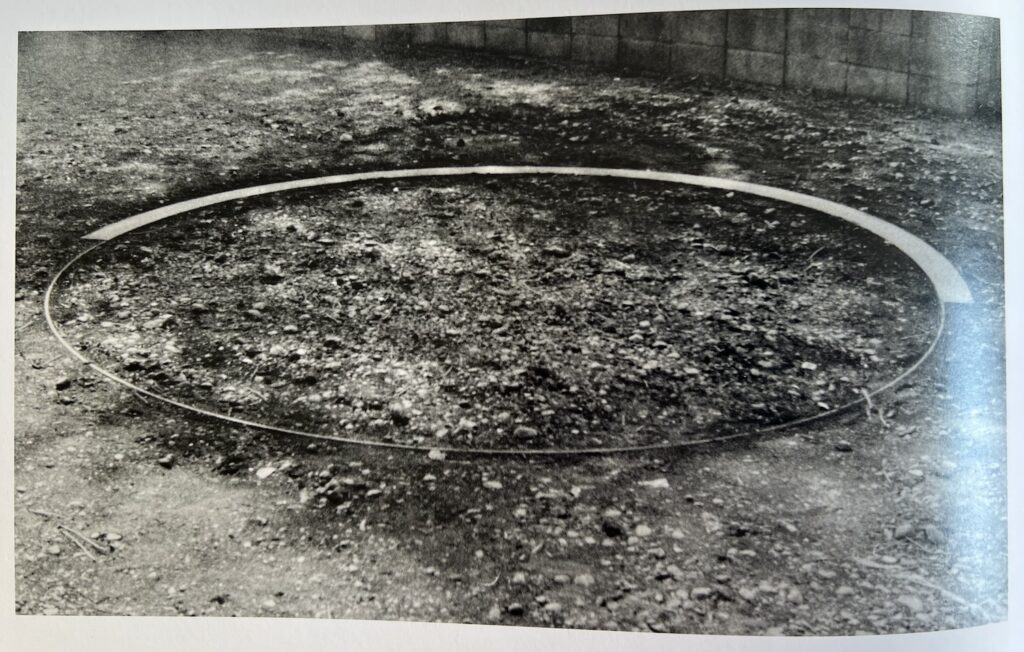
photo: Kuwashi Maruyama as published in Richard Serra Early Work (Steidl/Zwirner, 2014)
I couldn’t find Kuwashi Maruyama’s photo [above] online, only the photo of Shigeo Anzaï which shows Serra laying out a circle with a string and some chalk. Starting with his documentary images of international artists at the Biennale, Anzaï was the Shunk AND Kender of 1970s avant-garde Japan. The print above surfaced when he showed them at White Rainbow in 2015-2016.
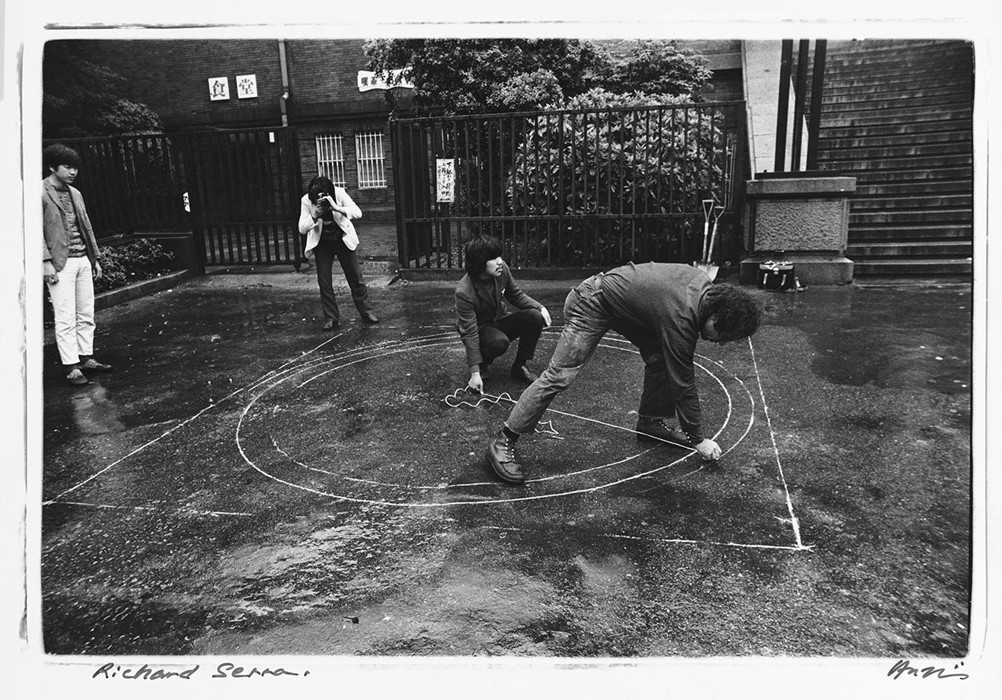
Tokyo Biennale ’70 is being reconsidered as an innovative success for curator Yusuke Nakahara’s choice to center artists [no nations, no pavilions]; to use a theme [“Between Man and Matter”] that put Japanese Gutai and Mono-ha artists in dialogue with international artists; and yet to not be too heavy-handed about it. Except that there were zero women; official photographer Anzaï all but ignored the Japanese artists; and almost every anecdote he tells is about something the artists wanted but were not allowed to do.
Christo was forbidden from wrapping something; Sol Lewitt was forbidden from painting on the wall, and on and on. Anzaï’s photo shows Serra trying to plant a tree inside an embedded steel ring in front of the museum, a plan that was rejected. He apparently decided to YOLO it, and installed the sculpture [top] somewhere else in the park, without permission, and without telling anyone where it was.
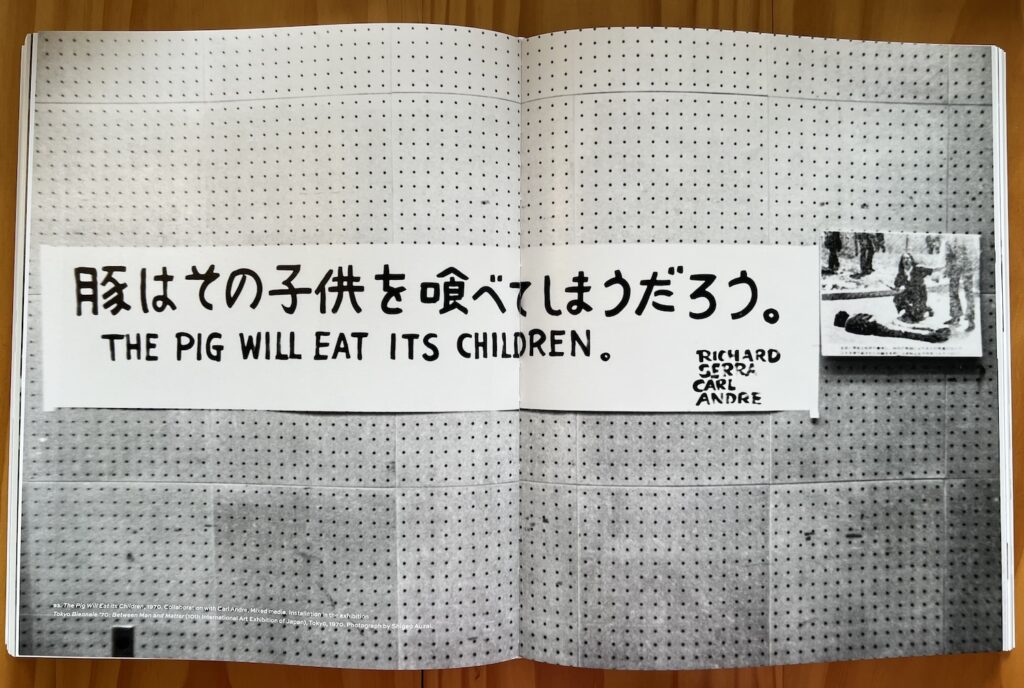
All of this is really a sidebar to the work Serra did manage to exhibit. A week before the Biennale opened, while Serra was onsite, the Kent State massacre happened. Serra and Carl Andre decided not to let the moment pass. The work they created, listed as “mixed media” in the Serra catalogue, was a wire service printout of John Filo’s photo of Mary Ann Vecchio wailing over the body of Jeffrey Miller; and a hand-painted sign in Japanese and English: “The pig will eat its children.” The two elements are taped side by side to the temporary pegboard wall used in the Biennale.
The Tokyo Museum Collection’s 2005 object listing for Kiyoji Ohtsuji’s 1970/2005 print lists it as “Richard Serra, The Pig Will Eats Its Children (political protest with Carl Andre).” The Serra catalogue caption just calls it a “collaboration with Carl Andre.”
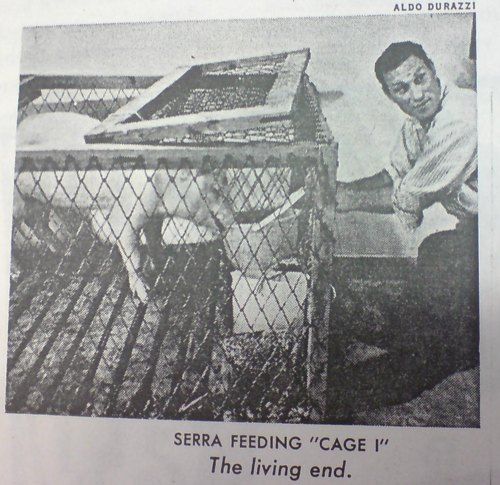
What to make of it?Now, Serra’s worked with livestock before, and pigs specifically. But there is no way he’s not [also] thinking of the cops here, right? Again, zero mention in the catalogue, zero mention online. Oddly, one of the very few other references to this title is in a 2012 collaborative work in a 2017 show at Maureen Paley; Gardar Eide Einarsson and Oscar Tuazon included a photo print on crushed aluminum of two parked Japanese riot police busses titled, The Pig Will Eat Its Children.
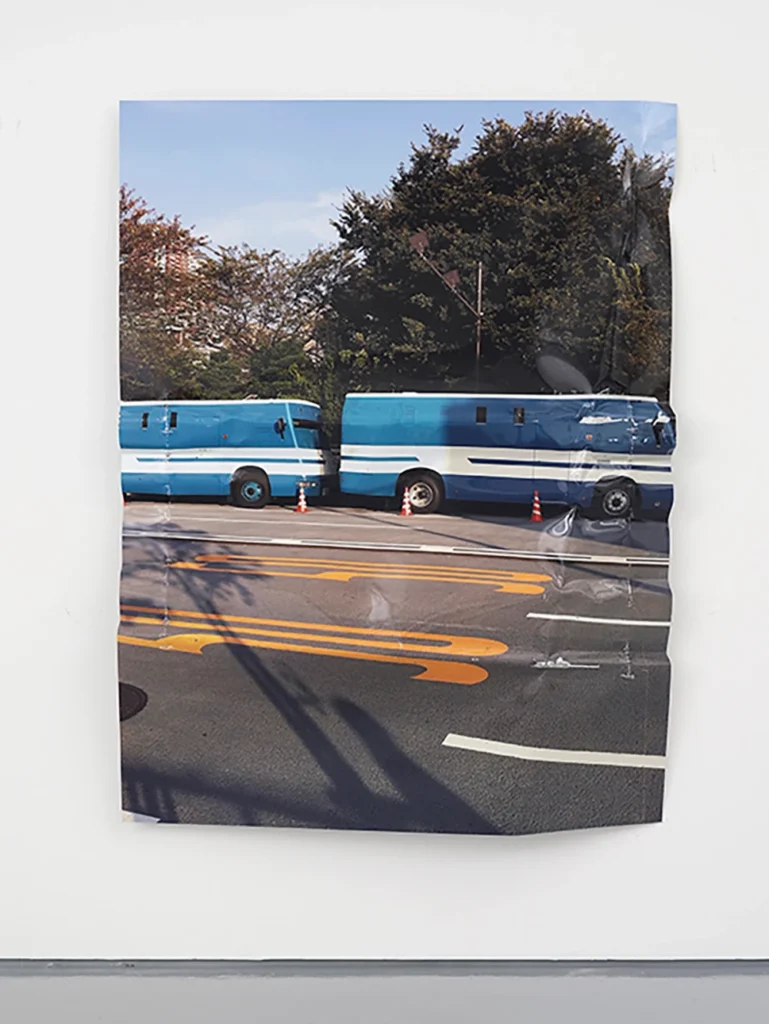
The Japanese connection makes me think they knew—Einarsson lives in Tokyo—or that there is a common reference. Though probably not Japanese. Serra & Andre’s Japanese text [豚はその子を食べてしまうだろう] reads like a literal translation, and the somewhat clunky painted version actually gets truncated. So it’s not a common saying. And anyway, dogs, not pigs, are the typical Japanese animal slang for police. So this is from the artist(s). Alas, they’re both dead now, so it’s a bummer that apparently no one in the last 10-50 years asked them about it. But don’t look at me; I only found out yesterday, and here I am.
Tokyo Biennale 70 as Contact Point [tate research]
